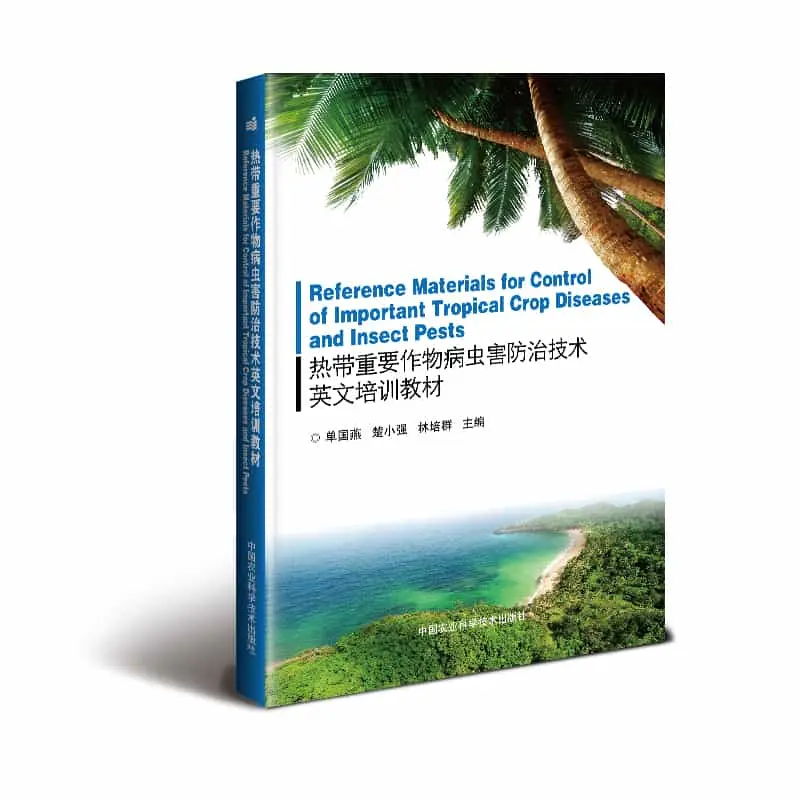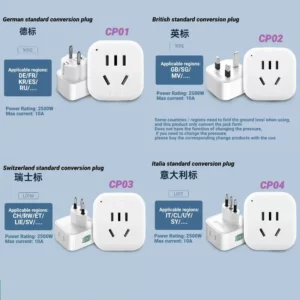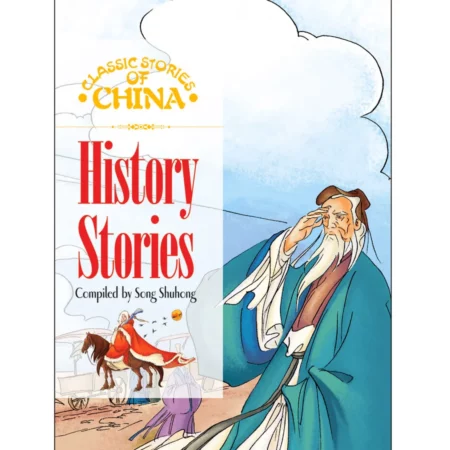Forewords
The Training Course on Control of Diseases and Pests of Important Tropical Crops 2015 was sponsored and organized by the Ministry of Commerce, People’s Republic of China, and hosted by the Environment and Plant Protection Institute of Chinese Academy of Tropical Agricultural Sciences (EPPI, CATAS). Since 1950, China has continuously offered substan- tial economic and technical assistance to over 120 developing countries in Asia, Africa, Latin America, the Caribbean areas, Oceania and Eastern Europe and other regions. The China’s aid is unconditional and aims to help recipient countries to enhance their capacity for development, to improve their people’s livelihood, and to promote their economic develop- ment and social progress. The objective of this training course is to train the researchers, technicians or technical officers from the recipient countries, especially along the “One Belt One Road” areas, to improve their ability in the integrated management of diseases and pests attacking the major tropical crops in the recipient countries.Occurrence of diseases and pests causes huge loss ofannual production of tropical crops, and it is of great importance to control these diseases and pests with integrated management to reduce the loss. This training course was attended by 23 researchers, technicians and administrative officers from 11 countries, i.e. Liberia, Vanuatu, Tonga, Sri Lanka, Grenada, Cuba, Myanmar, Cambodia, Ethiopia, Egypt and South Sudan. The training course was of a great success. According to the requirements of the trainees a collection of the teaching materials in this training course is published to provide reference for all the trainees and other people of interest. This book covers the diseases and pests of the major tropical crops and their integrated management strategies. The major tropical crops include cassava, sugarcane, rubber tree, coffee, tropical fruit, vegetables, etc.Any comments on this book are welcome.
June 7, 2017
1 The Major Problems Associated with Rubber Trees Diseases in
the World at Present 001
1.1 Occurrence and control of important diseases 001
1.2 Leaf diseases of rubber tree 004
1.3 3 Stem Diseases of rubber tree 009
1.4 Root diseases of rubber tree 012
2 Cassava Diseases and Their Management 021
2.1 World cassava industry 021
2.2 2 China cassava industry and disease 021
2.3 3 Cassava diseases and their management 022
3 Control for the Diseases of Banana Mango in China 045
3.1 1 Major diseases of banana 046
3.2 2 Major diseases of mango 048
4 Fusarium Wilt Disease and Virus Disease of Banana 061
Background: Rubber trees and rubber diseases & pests in China. Rubber trees are very important cash crops, contributing a lot to the welfare of local economies. However, rubber trees have been only spreading over the tropical belt of Guangdong, Hainan, Yunnan and Guangxi provinces. The annual production of natural rubber inChina is only 600, 000 t, which is far below the national needs of China for rubber.Rubber tree is attacked by more than 91 diseases and 182 mites or insects, some of which have caused large economic losses. Through the hard work of the scientific staff, achievements have been made on the occurrence and control of diseases and pests, which contributed a lot to the rubber industry in China. Current states of pests on rubber trees and its management in China. Based on our survey, four top economic important rubber tree diseases in China are Powdery Mildew (Oidium heveae), Anthrocnose[Colletrichum gloeosporioides (imperfect stage), Glomerela cingulata (perfect stage), C. acutatum], Brown bast (Tapping Panel dryness) and Root disease [Ganoderma pseudoferreum (Red Root Disease), Phellinus noxius (Brown Root Disease), Poria hypobrunnea (Black root disease), Rigidoporus linosus (white Root Disease), Helicobasidium compctum (purple Root Disease)]. Other main plant diseases on rubber include black strip, anthracnose, tapping panel dryness, abnormal leaf fall, Bint’s eye spot, pink disease, Periconia leaf spot and so on.1.1 1 Occurrence and control of important diseases
1.1.1 mildewThe study on the biological characteristics of the pathogen and epidemiology of
Reference Materials for Control of Important Tropical Crop Diseases and Insect Pests
the disease began in 1954. At that time, epidemic process, suitable epidemic condition, and epidemic structure of the disease were studied, and epidemic zone was determined to give guidance to the prevention and cure of the disease. Since 1960, short forecastbased on gross incidence of the disease as well as incidence on young leaves was widely applied. In Hainan, spore trapping method-based forecast was also used for con- trol guidance. In Yunnan, a research project on “epidemiology and forecast of powdery mildew diseases on rubber in mountain area” was carried out, according to the results of which it was put out that weather condition during the period of young leaves was the main index for short-time forecast. As to the control method, sulphur powder with particle size of 200 pores was applied during the emerging of new leaves in Hainan in1960, and 15 kilo sulphur powder was applied per ha. per time,every 7 days duringthe seasons, the sulphur powder was applied once and the total application was 3– 5 times. After improvement, the control method changed to apply 9–12 kilogram sulphur powder with particle size of 325 pores per ha. per time with the interval of 7 – 14 days. During 1977 and 1978, rubber farms in west Hainan received sulphur powder application from the airplane, and since 1984, triadimefon smog had been applied. In Yunnan, effective control was achieved by alternative application of sulphur powder and triadimefon.
1.1.2 Root diseases Root diseases include red root, brown root, purple root, black strip root, stinking root and black root with the first three occurred most frequently. The pathogen originated from the infected trunk before plantation. The earliest control method was to isolate the trees from each other through furrowing. In late 1960 s early disease detection as well as fungicide application was used to control root diseases; since 1976 tridemopph was used; in 1990s drenching with tridemorph or triadimefon was applied; in 1980s herbicides such as 2,4–D butylate, picloram and paraquat were used to kill the infected trunk in the new plantation area.
1The Major Problems Associated with Rubber Trees Diseases in the World at Present
1.1.3 rown bast & tapping panel dryness Tapping panel dryness is the destructive disease in Hainan, Yunnan and Guangdong on trees being cut. One million trees in Hainan were harvest suspended per year and dry rubber decreased almost 10 thousand tons. In Zhanjiang 20% percent of the trees were harvest suspended; in Dongfeng farm in Yunnan, the symptom of 26.4% of the trees reached 4–5 high level. Incidence of tapping panel dryness is still rising in the three provinces. One opinion believes that it is a physiological damage owing to too much rubber harvest; another believes that viroid leads to the disease. In practice, re-ducing harvest,and increasing fertilizer were used to protect the trees; another methodis to smear fungicide on the cut line of young trees of 1–3 years cut age and middle- level, low-level infected trees; on the old and seriously infected trees, fungicides were applied on the ring, and recommended chemicals include “ bao 01” and “ nong le bao”.
1.1.4 Anthracnose In 1972, the pathogen was confirmed through research; branches suffering from coldness, dead branches, infected fruits, susceptible varieties and the consecutive rain were the factors causing epidemy of the disease. Effective fungicides include manco- zeb, chlorthalonil, carbendazim, tuzet and so on. In 1980s chlorthalonil, carbendazim powder and amicarthiazol-thiram colloidal suspension agent were used in Hainan; in 1990s chlorthalonil and carbendazim smog agent were promoted.
1.1.5 Abnormal leaf fall Mainly occurred in Xishuangbanna, but occurred only occasionally in Hainan and no control was conducted. In Yunnan, small amount of powdery mildew was kept to infect the flowers and reduce the number of the fruits, thereby reducing the incidence of black strip.
1.1.6 strip In 1962 seventeen rubber farms in Hainan suffered great losses from the disease, therefore in 1963 the research on this disease was launched. The pathogen was founded
Reference Materials for Control of Important Tropical Crop Diseases and Insect Pests
mainly from the soil; the trees got infected when rain drop sprang to the low cut lines. The main factor causing the epidemic of the diseases was rubber harvest during the rainy season when the trees were wet. In order to control the disease, in autumn and winter harvest from the low position cut lines were suspended; rubber harvest were conducted only from the high-position cut lines, shallow cut as well; no harvest from wet barks, less than one centimeter above black strip and when the temperature was under 15°C was conducted. After every two cuts fungicides were smeared, and the fun- gicides used in early time included phenmed, anticucin, metalaxyl, later phosethy-Al, anilazine and so on. In Yunnan, from 1970–1972, due to the susceptibility of the high- yield bud grafting trunk, the disease occurred seriously. Control technique conducted in Hainan was adopted and the disease was controlled. However, abnormal leaf fall disease occurred in Xishuangbanna area from 1970– 1978, and the pathogen spores flowed with the rain water from the crown to the high position and caused black strip. Through the study from 1982–1984, effective control was developed: to install a rain prevention cap made from tarred felt above the high cut line and smear phosethy-Al and anilazine. This method was widely used in Yunnan rubber farms and the incidence of black strip was controlled under 0.1%. Currently tarred felt cap is still installed for black strip control.
1.1.7 Corynespora leaf fall disease of rubber trees Corynespora leaf fall disease of rubber trees was newly discovered in nursery and still limited to few plantations. This disease is potentially dangerous for rubber planta- tions in China. Generally Corynespora leaf fall disease of rubber trees are controlled byspraying chemicals like carbendazim, chlorothalonil and triadimefon and so on.
1.2 Leaf diseases of rubber tree
1.2.1 mildew diseaseThis is the commonest of all leaf diseases of rubber, infecting tender leaflets ontrees of any age. Maintaining itself the year round in nurseries, self-sown seedlings and
1The Major Problems Associated with Rubber Trees Diseases in the World at Present
in the shaded lower canopy, it assumes considerable importance during the early part of post-wintering refoliation and becomes the major cause of secondary leaf fall of mature trees. The disease is widespread, but is more destructive on certain clones especially susceptible to it and in the drier areas, if refoliation occurs during cloudy days and cool night with overhanging mist or drizzle. Continuous rainfall is inimical to it. Flowers are also attacked, with consequent loss of seed production. Cause: Ascomycete oidium heveae Steinm. a tropical species of powdery mildew occurring in all rubber-growing countries. It is an obligate parasite ( Fig.1-1) . Symptoms: Leaflets up to a fortnight from bud-burst are susceptible. The fungus appears as white dusty colonies on the leaf surface and grows to form extensive radiat- ing mats of fungal threads a few centimeters across, sporulating profusely. Favouring the lower surface, especially near the veins, only the superficial tissues are penetrated. Heavily infected leaflets of the shining brown to yellowish green stages shrivel and their tips, or the entire leaflet, blacken before dropping, leaving behind the leaf stalks for a while. Once the cuticle starts to harden and the colour turns light green, about ten days after bud-burst, affected leaflets will largely remain on the tree. A yellowish halo surrounds the fungal colonies, which eventually die. The surviving leaflets show characteristic translucent yellow blotches, especially clear when held against light (Fig.1-2) . In severe epidemics of secondary leaf fall, a carpet of diseased tender leaflets can be seen on the ground, and the defoliation may repeat with each successive attempt by the trees to refoliate. The trees thus weakened have a poor canopy and suffer consider- able loss in yield of latex.Infection of the inflorescence results in premature dropping of flowers, often withentirely bare stalks left behind. Other plants affected: The common weeds Euphorbia hirta and Jatropa curcas, as well as rambutan are the alternate hosts known. Prevention: Clones PB5/51, Tjir1, PB28/59 and RRIM628 are highly susceptible among the popular ones, and therefore should not be planted in disease-prone areas.
Reference Materials for Control of Important Tropical Crop Diseases and Insect Pests
Secondary leaf fall can be avoided by artificial defoliation about a month ahead of natural wintering by spraying a contact defoliant. An extra dose of nitrogen in the fertilizer mixture that is applied just after wintering helps to reduce the intensity of secondary leaf fall by this fungus. Treatment: Routine dusting of sulphur at five-to-seven-day intervals during the disease season, controls the disease. Three rounds will suffice to control secondary leaf fall, if the first one is correctly timed. Some systemic fungicides are more effective, but required to be sprayed; this is feasible only in nurseries, young plantings and, to some extent, young mature fields.
1.2.2 Colletotrichum leaf disease Like powdery mildew, this disease attacks tender expanding leaflets of trees of all ages. It is common on young plants up to about three years of age, and is particularly severe in budwood nurseries. It is also an important agent of secondary leaf fall of new foliage developing after wintering in mature trees, with the same consequences as those resulting from leaf fall by the mildew. The disease is favoured by wet weather. Therefore in areas where rainfall is more or less evenly distributed, such as in the south of the country, it can be destructive in mature as well as immature plantings throughout the year. Green shoots may be attacked in severe infections, leading to dieback. The fungus can also infect flowers and developing fruitlets.Cause: Ascomycete Colletotrichyn gloeooporioides Penz. whose perfect stage isGlomerella cingulata (Stonem.) Spauld. & Schrenk (Fig.1-3). Symptoms: Leaves are most susceptible during the period of bud-burst and for about ten days thereafter. The fungus penetrates deep into the leaf tissues. Leaflets attacked very early wither rapidly, blacken and fall. The disease may be mistaken for other leaf diseases such as powdery mildew and bird’s eye spot at this stage. Slightly older leaves offer a measure of resistance and get either partially damaged, generally along the tip and margins, or are extensively spotted. The remainder of the leaf blade may be retained on the shoot after the diseased portions shrivel, dry and drop away.
1The Major Problems Associated with Rubber Trees Diseases in the World at Present
Spots on the surviving leaflets are circular, one to two millimeters in diameter and have a marrow brown margin surrounded by a yellow halo. As the leaf ages the spits become quite distinct and raised up from the surface on a small cone that gives them a characteristic embossed effect. The disease can also be confirmed at any stage from the spore masses produced during wet weather-pale pink cheesy aggregates scattered on the surface of necrotic lesions (Fig.1-4).Other plants affected: A large number of wild and cultivated plants are hosts ofC. gloeosporioides. It is also a common saprophyte on decaying plant tissues. Prevention: Among the popular clones, the most susceptible to this fungus are PB5/63.LCB 1320, PB86 and RRIM526; therefore, they should not be planted in wet districts. Secondary leaf fall can be prevented by artificial defoliation a month before natural wintering, by spraying a contact defoliant. Treatment: Chemical control, for which effective fungicides are known, is pos- sible in nurseries and young plantings, but direct control of secondary leaf fall has not been found feasible because of the practical difficulties of spraying tall trees from the ground.
1.2.3 Anthracnose Anthracnose in rubber is a Colletotrichum leaf disease affecting fully developed leaves of plants growing under abnormal conditions, mainly in water-logged soil. Poorly grown plants and buddings on hillsides where the terraces slope inwards to collect water are most often seen to develop anthracnose. Cause: Ascomycetes Colletotrichum ficus Koorders and Colletotrechum heveae Petch are now considered synonyms of Colletotrichum gloeosporioides Penz., whose perfect stage is Glomerella cingulata (Stonem.) Sparld & Schrenk. Symptoms: The tern anthracnose refers to well defined spots or lesions on the leaf surrounded by numerous spore-producing pustules, resembling the disease anthrax in animals. Leaves affected are usually unhealthy and yellowish green. Lesions occur more at the edges, and show characteristic target-like concentric zones formed by lines
Reference Materials for Control of Important Tropical Crop Diseases and Insect Pests





Reviews
There are no reviews yet.